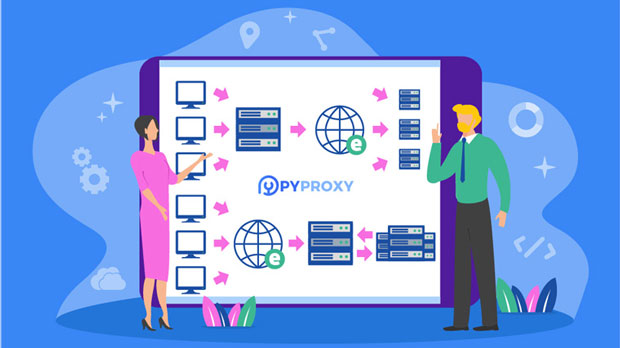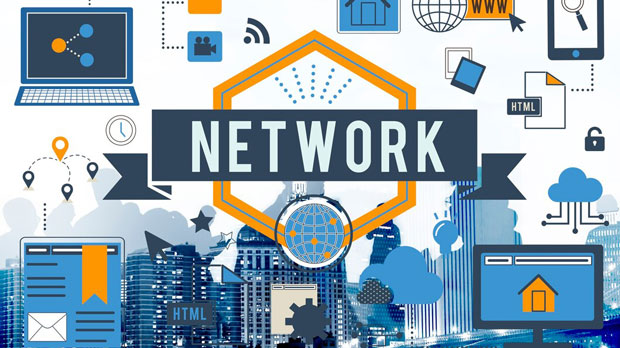Does using a proxy IP address affect network speed?
In the world of internet browsing, proxies are commonly used for various reasons, including privacy protection, security enhancement, or bypassing geographic restrictions. However, a question often arises: Does the use of a proxy ip address impact network speed? This question is important for users who depend on fast internet connections for tasks such as streaming, gaming, or professional work. The answer to this question is not straightforward, as several factors come into play when a proxy server is used. This article will explore the different aspects that determine how a proxy affects internet speed, including latency, server distance, bandwidth limitations, and other related issues. What is a Proxy and How Does it Work?Before delving into how proxies affect network speed, it is important to first understand what a proxy is and how it works. A proxy server acts as an intermediary between the user’s device and the internet. When a user sends a request to access a website, the request is first sent to the proxy server, which then forwards the request to the intended destination. The data from the website is then returned to the proxy server, which passes it back to the user’s device.Proxies serve a variety of purposes, such as masking the user's IP address, enabling access to restricted content, or providing additional security features. They can be classified into different types, including HTTP proxies, SOCKS proxies, and residential proxies, each with its specific use cases and configurations. The network speed of a user can be influenced by the type of proxy employed and the overall load on the proxy server.Factors That Affect Internet Speed When Using ProxiesThe primary factors that influence how proxies affect internet speed include latency, server location, network congestion, bandwidth limitations, and the type of proxy used. Understanding these factors can help users better manage their network performance while using proxies.1. Latency and Response TimeLatency is one of the most important factors in determining internet speed. When a user connects to the internet through a proxy server, the data request must first travel to the proxy server before reaching the intended destination. This additional hop introduces a delay in the communication process, known as latency.The higher the latency, the slower the internet connection will feel. For instance, using a proxy server located in a different country or continent will likely introduce significant latency, which can severely affect the user’s browsing experience, especially in real-time applications such as video streaming or online gaming.2. Distance to the Proxy ServerThe physical distance between the user's device and the proxy server also plays a key role in network speed. Proxies located closer to the user’s geographical location typically result in better performance, as the data doesn’t have to travel long distances, thus reducing latency. On the other hand, connecting to a proxy server that is located far away can cause noticeable delays and slower speeds due to the long data path.This is especially important for activities requiring high-speed internet, such as large file transfers or video conferencing, where the delay caused by long distances can impact the overall experience.3. Proxy Server Load and BandwidthThe performance of a proxy server can also be impacted by the number of users accessing it at the same time. If a proxy server is heavily loaded with requests, the available bandwidth for each user may decrease, resulting in slower speeds.In addition, the bandwidth limitations imposed by the proxy server itself can reduce the available download and upload speeds. Some proxies, particularly free or shared proxies, may have limited bandwidth resources, which can lead to slower connections. Paid proxies, on the other hand, may offer higher bandwidth and better performance, though this is not always guaranteed.4. Proxy Type and ConfigurationThe type of proxy used can have a significant impact on internet speed. Different proxy types, such as HTTP proxies, SOCKS proxies, and SSL proxies, have varying levels of efficiency and speed. For example, HTTP proxies are generally faster for basic web browsing, as they are optimized for handling HTTP traffic. However, for more complex use cases, such as torrenting or accessing specific types of content, other types of proxies like SOCKS may be more suitable, albeit sometimes slower due to the added overhead of handling different traffic protocols.The configuration of the proxy also matters. A well-configured proxy that routes traffic efficiently will perform better than one with poor configuration. For instance, proxies that use encryption or advanced security features may introduce additional overhead, slowing down data transfer speeds.5. Security Features and EncryptionWhile encryption is essential for privacy and security, it can also impact internet speed when using proxies. Some proxies offer encrypted connections, which protect user data but may slow down internet speed due to the processing required to encrypt and decrypt data. This is particularly noticeable when accessing secure websites or using VPN-based proxies, which use strong encryption protocols.Although encryption can lead to a decrease in speed, the trade-off may be worth it for users prioritizing security over speed. For users who need to strike a balance between security and performance, opting for proxies that offer lighter encryption or no encryption at all can help maintain faster speeds.Real-World Applications and How Proxies Affect SpeedIn practice, the use of proxies can either improve or hinder network speed, depending on the specific situation. For example, users who are trying to access content that is geo-restricted or censored in their region may experience slower speeds due to the extra steps involved in routing traffic through a proxy server in another location. However, for users who need to hide their IP address for privacy reasons or avoid censorship, the slight decrease in speed may be an acceptable trade-off.For activities that require high-speed internet, such as online gaming, video conferencing, or HD streaming, proxies can introduce lag and buffering due to increased latency. In contrast, for less time-sensitive activities like web browsing or accessing information, the speed impact may be less noticeable.ConclusionThe use of proxy ip addresses can indeed impact network speed, but the degree to which it affects performance depends on a variety of factors, including latency, server distance, bandwidth, proxy type, and the security features in use. While proxies can provide valuable benefits such as privacy and security, users should be aware that they may also experience slower speeds due to the additional layers of complexity introduced by the proxy server. Ultimately, the best approach is to choose the right proxy based on specific use cases and performance requirements, ensuring a balance between speed, security, and privacy.
2025-01-23

























































